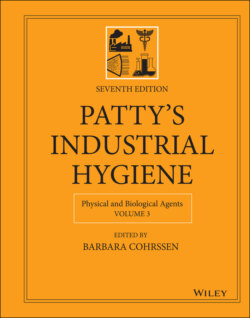Читать книгу Patty's Industrial Hygiene, Physical and Biological Agents - Группа авторов - Страница 22
3.4 Quantity of Radioactivity
ОглавлениеSince radioactive isotopes are used because of their radioactivity, the unit for expressing the quantity of radioactive material is based on the disintegration rate. Thus, for example 3.7 × 1010 atoms in 1 g of 226Ra decay in 1 s, while 1.7 × 1014 atoms in 1 g of 210Po decay in 1 s. One gram of 210Po is much more radioactive than 1 g of 226Ra. Clearly, mass is not the most appropriate unit for specifying the quantity of a radioisotope. The traditional unit for the quantity of a radioisotope is Curie, symbolized by Ci. The Ci is defined as that quantity of a radioactive material in which 3.7 × 1010 atoms are transformed in 1 s. The commonly used subunits are the millicurie, mCi (10−3 Ci), microcurie, μCi (10−6 Ci), nanocurie, nCi (10−9 Ci), and picocurie, pCi (10−12 Ci).
In the SI system, the unit for the quantity of radioactivity is the becquerel (Bq). One becquerel is defined as that quantity of radioactive material in which one atom disintegrates in 1 s. Since the Bq is such a small quantity of radioactive material, the kilobecquerel (kBq) (103 Bq), megabecquerel (MBq) (106 Bq), and the terabecquerel (1012 Bq) are frequently used. 1 MBq = 27 μCi.
